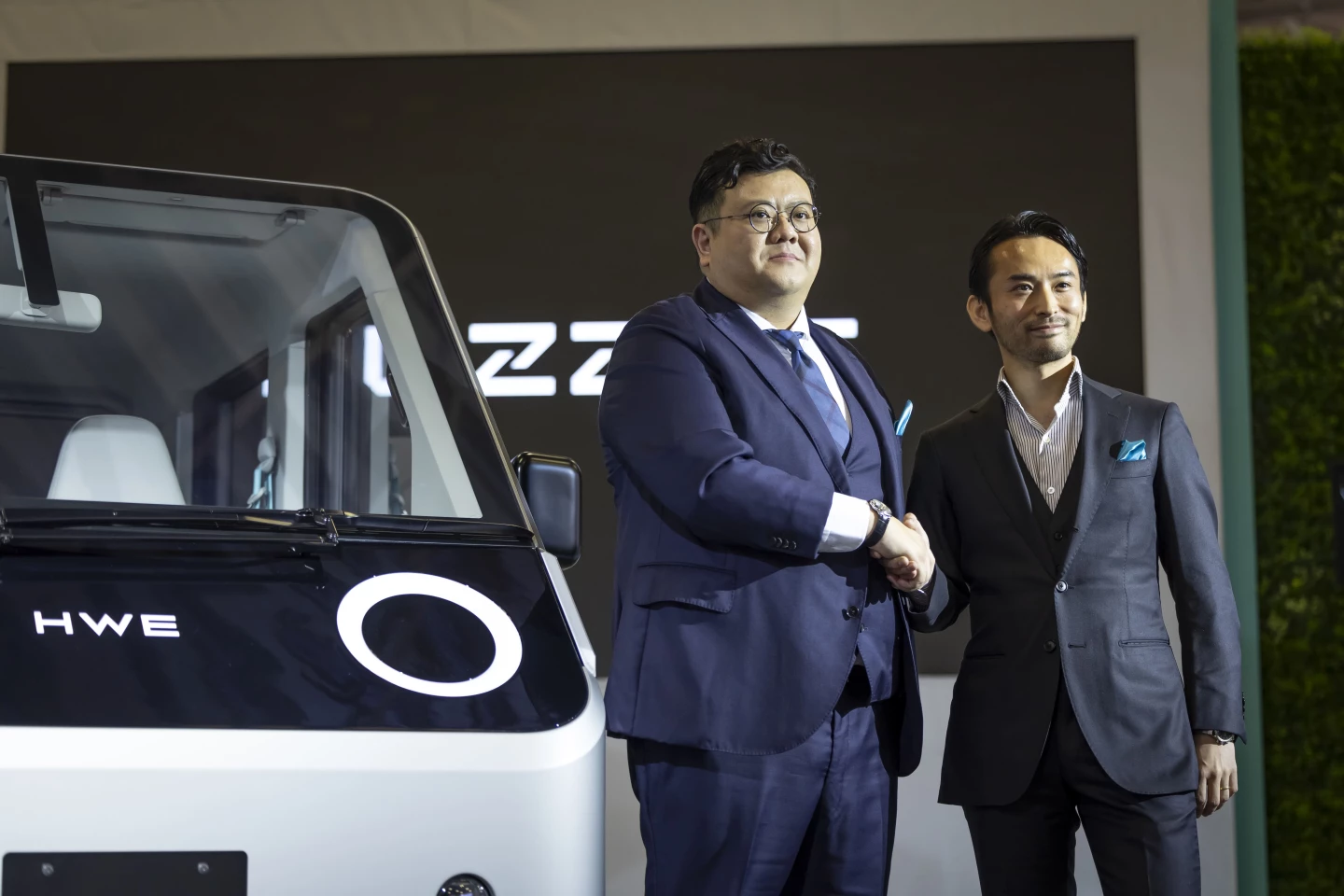HW Electro, reported to be Japan's first commercial EV manufacturer, has revealed a new light electric concept called the Puzzle, a boxy minivan designed with disaster relief in mind and sporting external power outlets, USB ports, a crowbar and a first aid kit.
The Puzzle concept was first unveiled at the 2023 Japan Mobility Show late last month, and was recently previewed to the automotive press in New York ahead of confirmed US availability from 2025.
Full details for the cute kei van are yet to be revealed, but we do know that the Puzzle offers seating for two in a simple cabin, with a digital dash and a touchscreen infotainment panel rocking physical environmental controls underneath.

A sliding control interface sits in the middle for selecting drive, park and reverse, and there are panels on the door and dash that feature peg-board holes for clamping on accessories such as document bins, cup holders, arm rests and so on. Elsewhere you'll find USB ports on the dashboard, and what looks like a wireless charging pad, for topping up mobile gadgetry.
The prototype measures 3,395 mm (133.6 in) in length, is 1,475 mm (58 in) wide and stands 1,920 mm (75.6 in) tall. Access to the cargo compartment is via side and rear doors, making the minivan a good fit for inner-city package delivery solutions. The maximum load capacity is reported to be 350 kg (770 lb).
To help cut manufacturing costs and waste, some of the panels are used in different locations around the vehicle's frame – the front panel under the headlights, for example, is the same shape and size as the one above the windshield.

Other than being confirmed as an electric kei van, drivetrain details have not been shared at this time, but the company did release a mobile companion app in June that will allow users to check battery status, location and more from a smartphone. The vehicle is also topped by three photovoltaic panels to extend the vehicle's per-charge battery life.
On the passenger side exterior, a compartment opens for access to a first aid kit, USB ports, internet connectivity and AC power outlets. Charging ports are located in a similar compartment on the driver's side. And there's a crowbar concealed under the floor at the rear.
More specs and pricing will doubtless be released closer to the 2025 availability window. In the meantime, the video below shows the working prototype in action.
Source: HWE via FleetOwner








